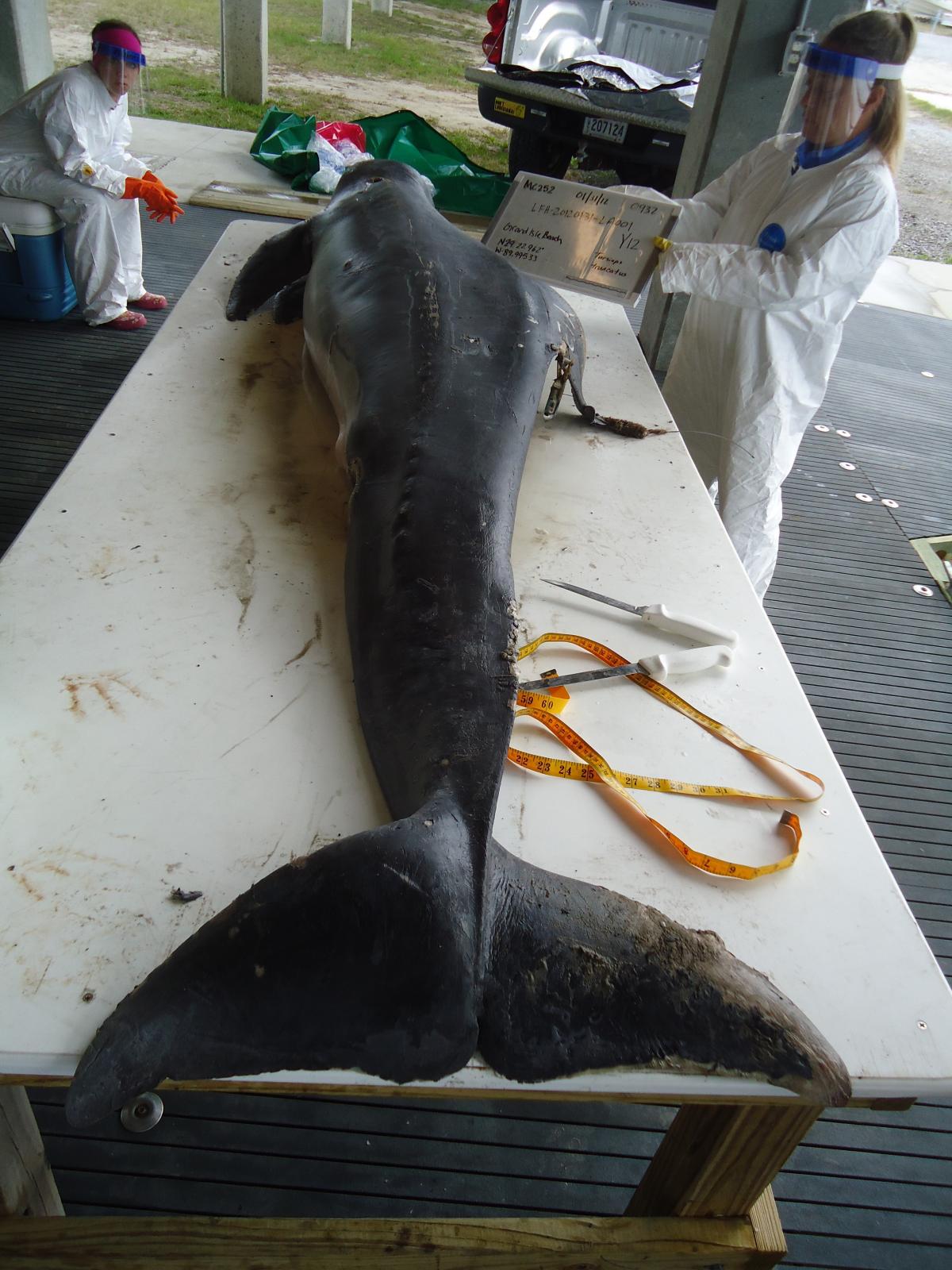March 2, 2017
Dolphin Populations Hit by BP Oil Spill Will Take 40 Years to Recover, Report Finds
BY: Allison Guy
Bottlenose dolphin populations affected by the 2010 Deepwater Horizon disaster will take 39 years to recover to their former abundance. That’s one of several sobering conclusions from a recent edition of Endangered Species Research dedicated to the spill. In a series of related reports, researchers revealed that even five years after the disaster, dolphins still suffered from severe lung disease, hormonal impairments and poor reproductive success. Given the Trump administration’s pro-oil platform, the glacial pace of bottlenose dolphin recovery has concerning implications for future offshore oil and gas developments.
One study modeled recovery times for dolphins in bays across Louisiana, Mississippi and Alabama, finding that each stock would take around four decades to bounce back after exposure to oil and chemical dispersants. According to Dr. Lori Schwacke, the study’s lead author and the chief conservation medicine scientist at the National Marine Mammal Foundation, several traits make dolphins particularly vulnerable to oil spills. Not only are they slow to mature and reproduce, their intricate and often lifelong social bonds mean that the loss of adults can have rippling effects on behavior and mating success.
“The point of the paper is that you’ve got to do more than just count dead bodies after the spill, because the losses of reproductive adults from those populations is basically going to affect the population over decades,” Schwacke said. “That’s why it takes them so long to recover.”
Long-term harms
Other papers in the January edition of Endangered Species Research painted a grim picture of ongoing illness in affected bottlenose groups. Researchers found a high prevalence of moderate to severe lung disease in oiled dolphin populations, compared to their unaffected relatives elsewhere in the Gulf of Mexico. Using ultrasound exams, scientists discovered 14 cases of severe lung disease in a sample of 99 bottlenose dolphins — what the authors called a “remarkable” finding, given the relative rarity of pulmonary illness in dolphins living elsewhere. 
Oil exposure was also linked to an impaired stress response, with visible abnormalities in affected dolphins’ brains. As Schwacke explained, the stress hormone cortisol plays a role in a variety of essential life processes, from combatting disease to maintaining a pregnancy.
The combined harms from oil exposure led to dramatically lower reproductive success rates in the years following the disaster. Female dolphins living in the footprint of the spill gave birth to living calves only 19 percent of the time, compared to 65 percent in unaffected areas. Several mothers were observed pushing the carcasses of stillborn calves, a behavior that is likely an expression of grief.
“These studies show that the long-term impacts from oil spills can last much longer than anyone expected,” said Dr. Ingrid Biedron, a whale biologist at Oceana. “When there’s a spill the size of the Deepwater Horizon spill, nobody knows how that’s going to affect the ecosystem long-term.”
A license to spill
Signs suggest that the Trump administration is considering expanding offshore oil drilling, a move that would have potentially disastrous effects for dolphins and other marine wildlife.
Last year, a leaked email from Thomas Pyle, the head of Trump’s energy transition team, indicated that one of the likely pillars of Trump’s energy policy would involve increasing oil and gas leasing on federal lands — including in the Chukchi and Beaufort seas in the Arctic, and along the mid and south Atlantic coast. In 2016, the Obama administration removed these regions from the government’s five-year oil and gas leasing program. It is unclear whether and how quickly Trump could reverse these restrictions.
Claire Douglass, Oceana’s campaign director for climate and energy, said that the new studies in Endangered Species Research add to a wealth of evidence against offshore drilling. “These studies support what we already know, that offshore drilling is extremely costly, and we still don’t understand its impact on the environment,” she said. “It’s not worth the risk since we have proven technology, like offshore wind, that we already know is safe.”



